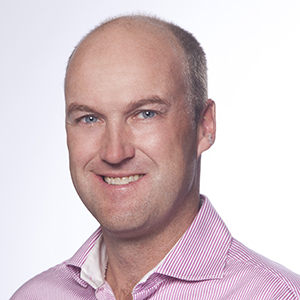Startups pitch their ideas to improve care for kids at SXSW
By Samantha Beal
A hotbed for emerging technology, innovation and industry leaders, the South by Southwest Conference (SXSW) in Austin, Texas happening March 9-15 will include a unique competition all about improving children’s health. Experts from Stanford Medicine Children’s Health and other leading children’s hospitals across the country will help select the winner.
The Impact Pediatric Health startup pitch competition is an opportunity for up-and-coming digital health and medical device startups to pitch their innovation to a panel of medical executives and investors. The fourth annual pitch event looks at digital health, medical technologies, and global technologies that help improve kids’ health. Startup CEOs will have three minutes to pitch how their companies are solving unique health care needs of children, from babies to teens. Happening March 9, the pitch presentations will be followed by questions from the emcees and judges. Winners in each category will be announced at the end of the event.
We asked our experts attending the conference for insight on why this challenge is needed and how they are involved at Stanford Medicine Children’s Health in spurring innovation for pediatric health.
 |
James Wall, MD, Pediatric Surgeon and Assistant Director of the Biodesign Innovation Fellowship for Stanford Biodesign. Previous judge for Impact Pediatric Health pitch competition. |
 |
Charlette Stallworth, Vice President of Strategic Partnerships, Stanford Medicine Children’s Health. Judge for 2018 Impact Pediatric Health pitch competition. |
Q: Tell us about this competition and why is it important?
CS: The IPH pitch competition is a great opportunity for start-up CEOs to present how their companies are addressing the unique healthcare needs of babies, kids, and teens. Most healthcare innovations are focused on the adult population, so it is important that we seek out and encourage companies focused on transforming pediatric healthcare.
JW: Creating a connection between innovators, health care and hospital experts and investors to focus on pediatric care needs is incredibly important because pediatric innovation is often underserved by larger tech companies.
Q: Why is that?
JW: Relative to the adult health care industry, children requiring acute, intensive or specialty care is a small piece of the health care pie. But what we know as providers is that children are not just small adults. Babies, children and young adults have very unique needs and innovation in the pediatric care arena is essential to continue improving the way we care for them.
Q: What kind of innovation is needed?
JW: That is what’s so exciting, innovation is needed everywhere. The way care is accessed and delivered, to the experience for patients and their families. From new devices that make care safer or more efficient, to telemedicine technology, the possibilities are endless.
Q: What makes SXSW a good place for this?
CS: The SXSW venue allows these pediatric healthcare start-ups to get valuable feedback and make connections, which could help bring their breakthrough inventions to the children who need them. The dynamic atmosphere of SXSW is pretty perfect for this pitch competition.
Q: You both have a focus on advancing innovation at Stanford Medicine Children’s Health, can you talk a bit about those efforts?
JW: As providers and researchers in academic medical environment, collaboration is natural. And being on the Stanford campus it crosses into other schools and programs. I work on the Biodesign Innovation Fellowship program with Stanford Biodesign. This program is about encouraging innovation in unique spaces, like a hospital. Over the last three years we’ve trained over 100 physician, engineer and business fellows to work on inventing innovative diagnostics, devices and other technologies to address health care needs, and preparing to introduce those products into patient care environments through start-up, corporate and other implementation channels. In addition we have developed training programs for undergraduate students, graduate students, faculty member, and industry executives in the Biodesign process.
CS: Through our involvement in Impact Pediatric Health, we are proactively seeking solutions to universal pain points across the pediatric health landscape. In my role at Stanford Medicine Children’s I am also focused on technology transfer - helping our innovative providers and staff disclose and develop their novel ideas into breakthrough products that could vastly improve children’s health. Dr. Wall and I are hosting a pediatric innovation symposium in May, where we will highlight state-of-the-art technologies being developed at Stanford Medicine.
Connect with us:
Download our App: